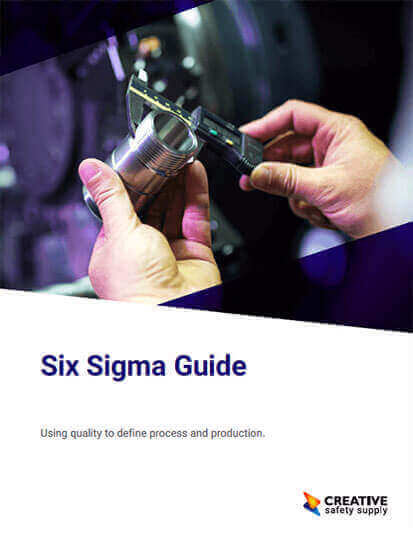
This is a great question. For most, Six Sigma seems like its uses and advantages would only benefit industrial manufacturing, since its intended purpose is to improve mass production processes and greatly reduce the chances of inconsistencies (3.4 per million production cycles, to be exact). But businesses that focus on manufacturing aren’t the only ones in need of Six Sigma.
Service industry-based companies still rely on consistency for their success. For this reason, the Six Sigma methods can help create uniformity in performing services, in this will help create streamlined performance when it comes to executing services.
Let’s look at the two methods of Six Sigma:
DMAIC
This methodology is comprised of five phases:
Define the system, the expectations of customer, project goals, etc. specifically. Well-defined goals and expectations mean product specifications are more clear and consistent.
Measure key aspects of the current process and collect relevant data; calculate the “as-s” Process Capability.
Analyze data to confirm cause-and-effect relationships. Determine what causal relationships are; take all actions possible to ensure all conditions and special circumstances have been considered and accounted for. Seek out root cause of the defect under investigation.
Improve current process using data analysis as basis for improvement. Techniques like design of experiments, poka yoke, and mistake proofing. Experiment with pilot runs to establish Process Capability.
Control the processes to ensure that any aberrations are corrected before they turn into defects.
DMADV or DFSS
DMADV project methodology, known as DFSS (Design for Six Sigma) features five phases:
Define design goals that align with customer needs and business strategy
Measure and identify characteristics that are critical to quality (CTQ). Measure product capabilities, production process capability, and measure risks
Analyze to develop and design alternatives
Design an improved alternative, best suited per analysis in the previous step
Verify the design, set up pilot runs, implement the production process and hand it over to the process owner(s).
These methods can easily be applied to service industries like restaurants, coffee shops, or auto mechanics to increase uniformity and consistency and reduce the chance of errors.
Similar Questions
- Is Six Sigma Lean?
- What is Design for Six Sigma?
- How can Six Sigma be used in project management?
- What is Six Sigma?
- Can Six Sigma improve quality?
- How is Six Sigma different from Kaizen?
- What are the benefits of Six Sigma?
- How Can Six Sigma be Used in Construction?
- How can Six Sigma be used in healthcare?

